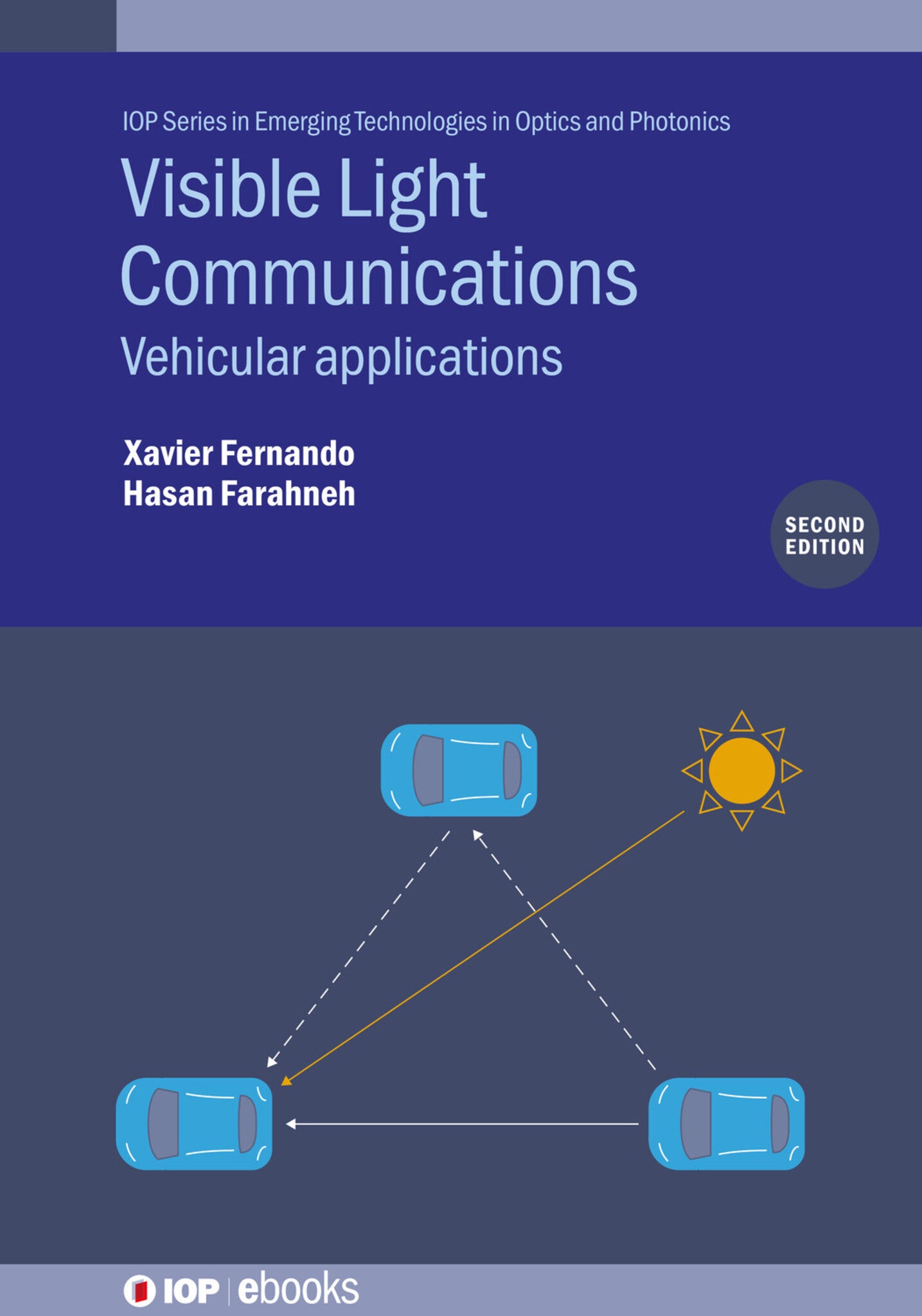We're sorry. An error has occurred
Please cancel or retry.
Visible Light Communications (Second Edition)

Some error occured while loading the Quick View. Please close the Quick View and try reloading the page.
Couldn't load pickup availability
- Format:
-
11 December 2024

The book focuses on the innovative application of Visible Light Communication (VLC) within the realm of vehicular networks to enhance autonomous driving and intelligent transportation systems (ITS). The purpose is to explore how VLC can facilitate high-speed wireless data transmission using the visible spectrum of light, which promises a huge bandwidth, low confinement, and usage of existing LED head/taillights. Advance topics such as MIMO, Optical OFDM, Precoding\Equalization and adaptive noise cancellation are studied in detail in the realms of VLC. Furthermore, it examines the potential of VLC to complement existing communication Cellular V2X standards in scenarios demanding low latency and high reliability. The integration of Artificial Intelligence (AI) and Machine Learning (ML) in VLC systems are also explored.
Key Features:
-
Includes detailed modular multi-reflection channel model; that can be used with the required complexity.
-
Includes Artificial Intelligent algorithms to alleviate the effect of bright sun light, a major concern in outdoors.
-
Investigates some topics for first time such as shadowing effect, coherence time and denoising schemes.
-
Advance topics such as MIMO, Optical OFDM, Precoding and Equalization are studied in detail in the realms of VLC.
-
Chapter organization provides a systematic overview of the subject, accessible to students of various levels including undergraduate and graduate students and practicing engineers.

TECHNOLOGY & ENGINEERING / Optics, Optical physics, TECHNOLOGY & ENGINEERING / Electronics / Optoelectronics, TECHNOLOGY & ENGINEERING / Electrical, Applied optics, Electrical engineering

Preface
Acknowledgements
Author biographies
List of acronyms
List of symbols
1 Introduction
2 Nuts and bolts of V2X VLC systems
3 Impacts of directional propogation
4 Channel modeling for V2V-VLC system
5 Adaptive optical OFDM for V2X communications
6 Precoder and equalizer in 2 X 2 MIMO-VLC systems
7 Sunlight effects and denoising schemes
8 Hybrid channel-based foglet-assisted smart asset reporting



